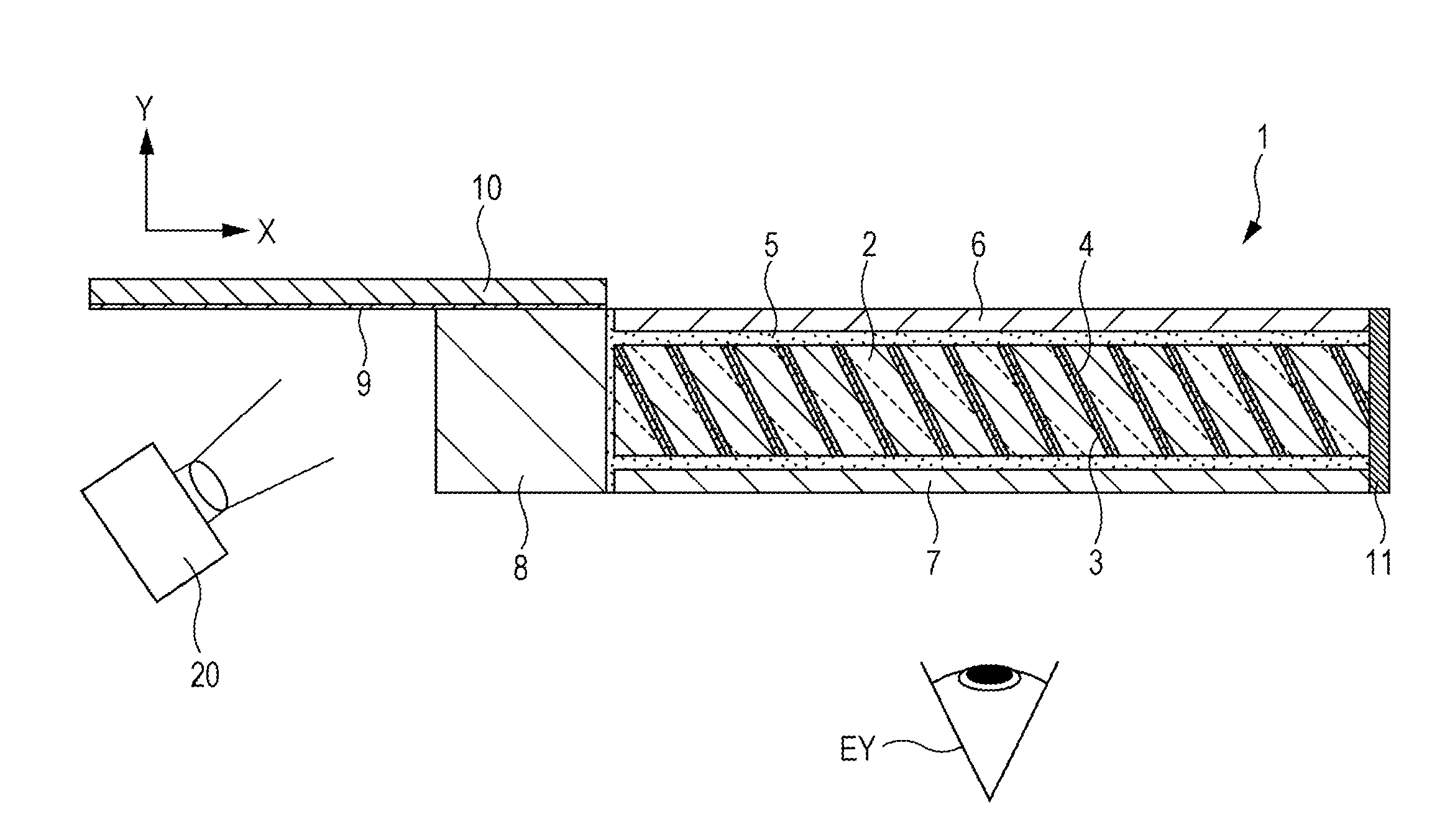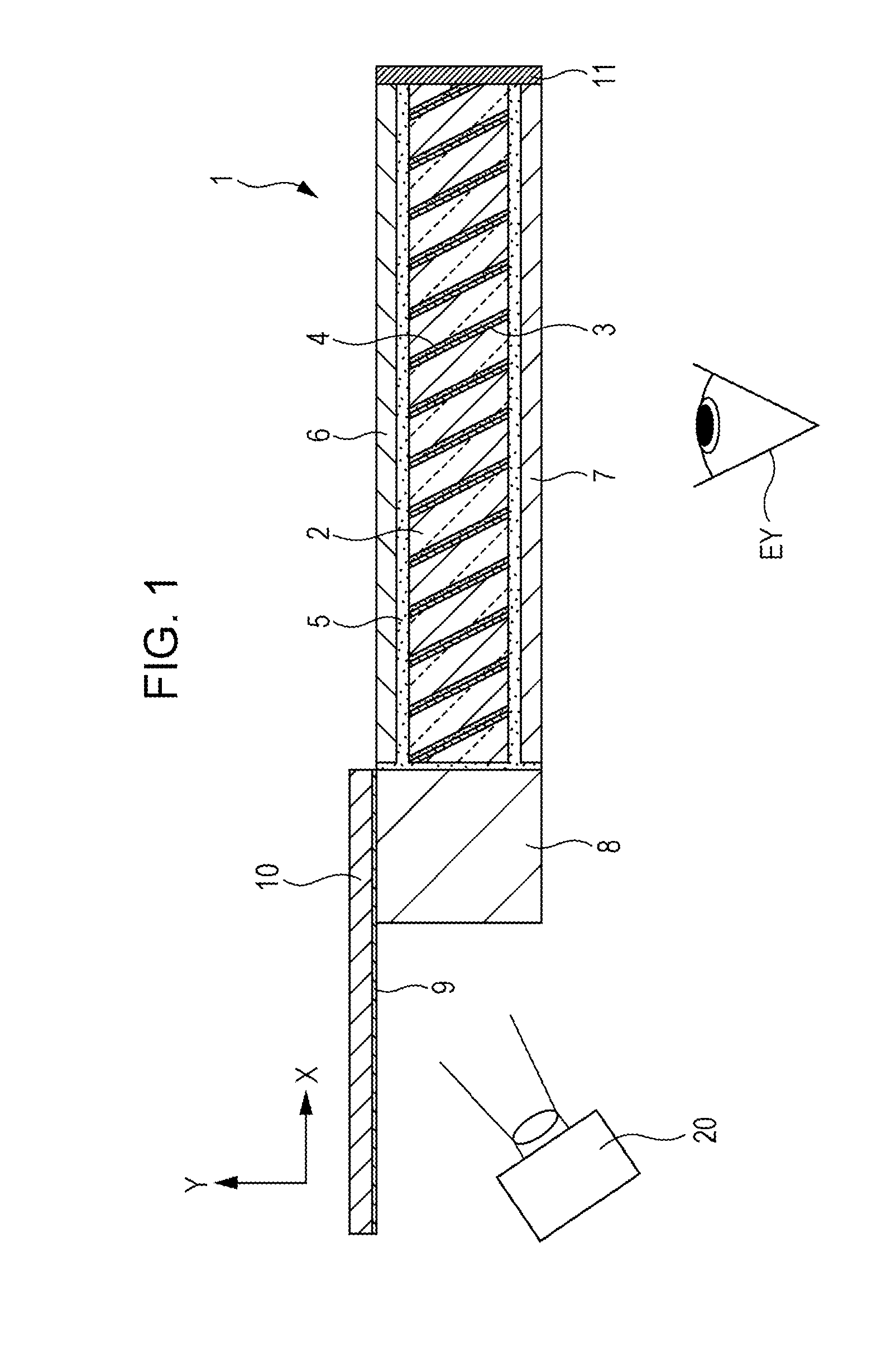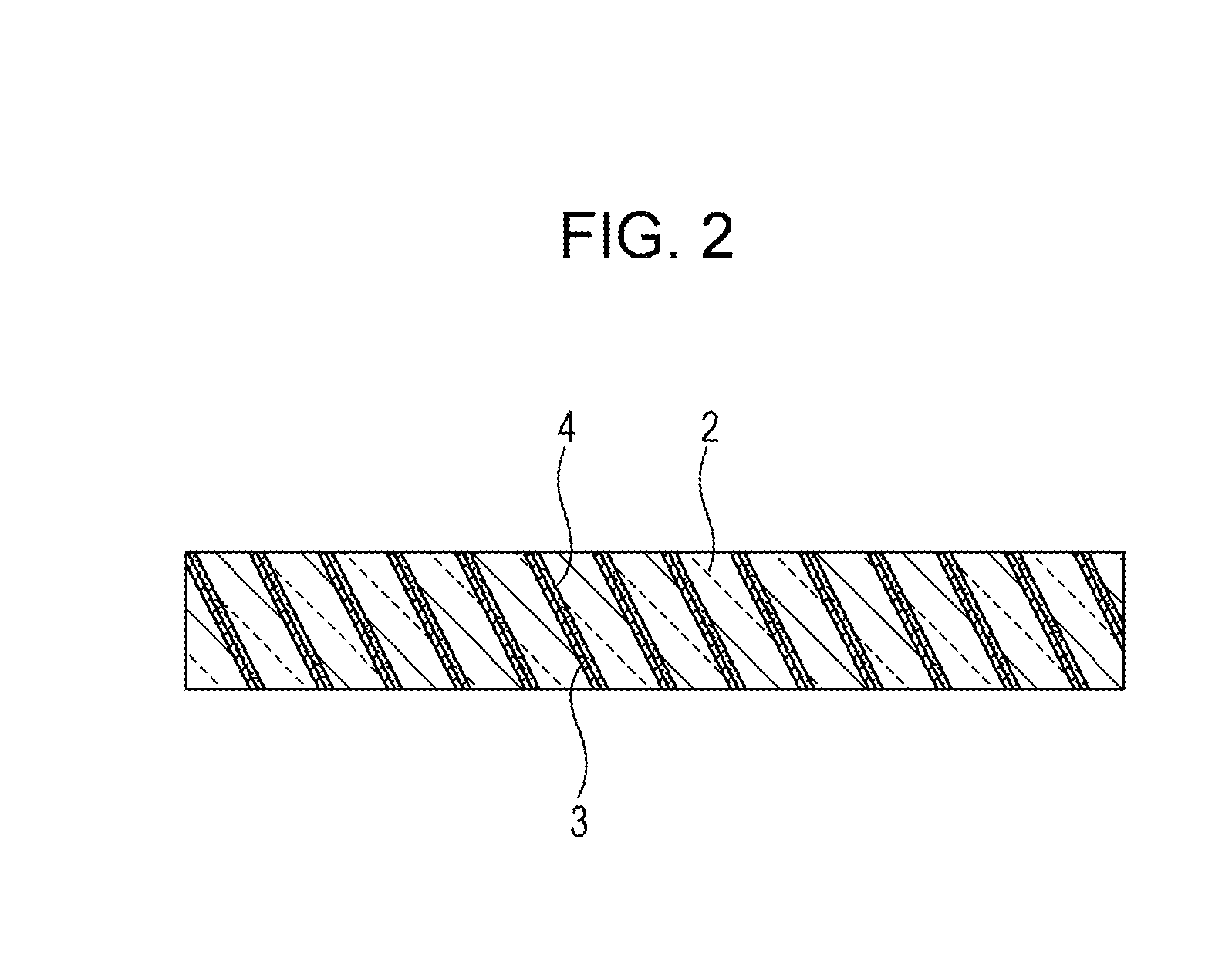Optical element, image display device and method for manufacturing same
- Summary
- Abstract
- Description
- Claims
- Application Information
AI Technical Summary
Benefits of technology
Problems solved by technology
Method used
Image
Examples
first embodiment
[0031]FIG. 1 is a side view illustrating the whole image of an optical device 1 according to the first embodiment. As illustrated in FIG. 1, the optical device 1 includes a light guide plate 2, an upper flat plate 6, a lower flat plate 7, an introduction block 8, an incident light intake mirror 9, and a mirror supporting plate 10.
[0032]As illustrated in FIG. 2, the light guide plate 2 is created by (i) forming a transflective layer 3 on plate-like members made of a material such as a light transmissive resin material by a method such as vapor deposition, (ii) bonding, with an adhesive 4, such plate-like members on which the transflective layer 3 has been formed so that the plate-like members are shifted from each other in accordance with an inclination angle, and (iii) cutting the plate-like members thus bonded.
[0033]The light guide plate 2 is bonded to the upper flat plate 6 and the lower flat plate 7 with an adhesive 5, and the upper flat plate 6 and the lower flat plate 7 are kep...
second embodiment
[0046]The second embodiment of the invention is described with reference to FIG. 3. As illustrated in FIG. 3, a light guide plate 2 may be bonded in an inclined state to an upper flat plate 6 and a lower flat plate 7. Even in such a case where the light guide plate 2 is inclined, a gap between the upper flat plate 6 and the light guide plate 2 and a gap between the lower flat plate 7 and the light guide plate 2 are filled with an adhesive 5, and therefore flatness of a topmost surface of the upper flat plate 6 and a bottommost surface of the lower flat plate 7 can be achieved and the topmost surface of the upper flat plate 6 and the bottommost surface of the lower flat plate 7 can be kept parallel with each other. Also in the present embodiment, surface roughness of the top surface and the bottom surface of the light guide plate 2 itself can be covered by the adhesive 5, and the parallelism of the top surface and the bottom surface can be secured by the upper flat plate 6 and the lo...
third embodiment
[0048]The third embodiment of the invention is described with reference to FIGS. 4 and 5. In the first embodiment and the second embodiment, an example in which an upper flat plate 6 and a lower flat plate 7 are bonded to a light guide plate 2 with an adhesive 5 has been described. However, the invention is not limited to this example.
[0049]For example, it is possible that a light guide plate 2 be placed in a mold 30 whose top and bottom surfaces are kept parallel with each other and whose left and right surfaces are kept parallel with each other and the mold 30 be filled with an adhesive 5 or a resin as illustrated in FIG. 4. The light guide plate 2 that has been unified with the adhesive 5 or the resin can be obtained by removing the mold 30 as illustrated in FIG. 5 after the adhesive 5 or the resin is cured. In this case, flatness and parallelism of a top surface and a bottom surface of the adhesive 5 or the resin can be kept. It should be noted that the flatness just needs to be...
PUM
| Property | Measurement | Unit |
|---|---|---|
| Angle | aaaaa | aaaaa |
| Light | aaaaa | aaaaa |
| Refractive index | aaaaa | aaaaa |
Abstract
Description
Claims
Application Information
 Login to View More
Login to View More - R&D
- Intellectual Property
- Life Sciences
- Materials
- Tech Scout
- Unparalleled Data Quality
- Higher Quality Content
- 60% Fewer Hallucinations
Browse by: Latest US Patents, China's latest patents, Technical Efficacy Thesaurus, Application Domain, Technology Topic, Popular Technical Reports.
© 2025 PatSnap. All rights reserved.Legal|Privacy policy|Modern Slavery Act Transparency Statement|Sitemap|About US| Contact US: help@patsnap.com



